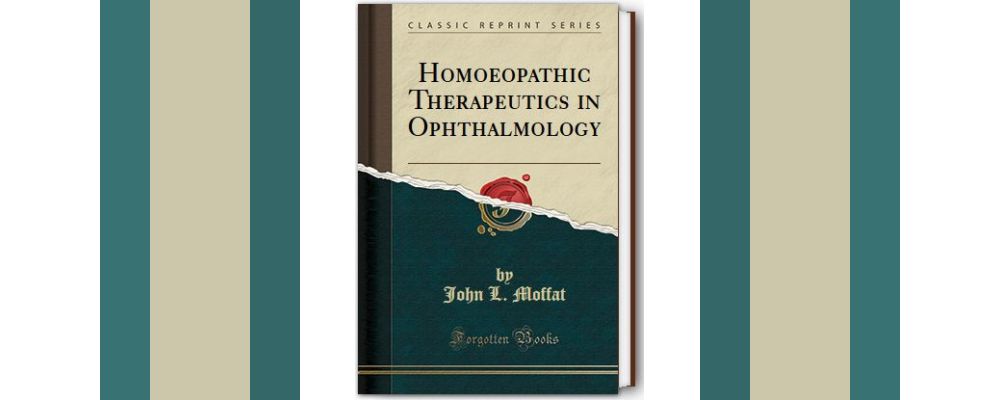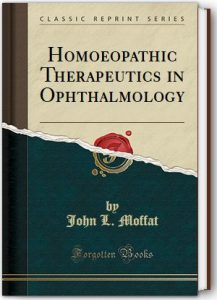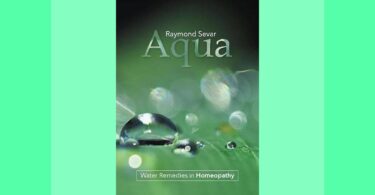Author: John L. Moffat, B.S., M.D., O. et A. Chir.
166 pages, cloth.
Pub: Boericke & TafeL 1916.
Reviewed in: North American Journal of Homoeopathy , January 1917.
John L. Moffat MD, was president (1902) of the Homoeopathic Medical Society of the State of New York, Vice President (1905, 1908) of the American Homoeopathic Opthalmological , Otological and Laryngological Society; Opthalmic Surgeon 1894-1911, Cumberland Street Hospital, New York and contributor to the American Encyclopedia of and Dictionaroy of Opthalmology.
In compiling this little book Dr. Moffat would appear to have chiefly in mind as his reader, an ophthalmologist who has not studied homoeopathy. These he bids: ‘Play fair, please. Do not condemn homoeopathy if your experiments in empiricism fail. Choosing a remedy from the repertory for a disease or a symptom is empiricism, not homoeopathy !”
Dr. Moffat’s first chapter gives a brief sketch of Hahnemann and his work, and the second explains what homoeopathy is. ‘Homoeopathy,” the author says, ”is a system of medicine limited, strictly speaking, to medicinal therapeutics, but extending throughout the practice of medicine and surgery wherever and whenever internal medication is applicable. Based upon cure by symptom-similarity and upon individualization of patient, case and remedy, it involves the single remedy, small dose, potentization, provings, verifications, materia medica, pharmacology and a complete organization of societies, colleges, hospitals, etc., books and periodicals peculiar to but not necessarily limited to itself.”
Bearing in mind the stumbling block Hahnemann’s psora theory is to many non-homoeopathic physicians, Dr. Moffat explains it by saying: ‘ Bythe psora miasm Hahnemann meant a dyscrasia which is typified by that condition of the body in which the sarcoptes scabiei thrives. We all know that one individual is contaminated by the touch of a person or article carrying the itch insect while another escapes as if he or she were repugnant to the insect.”
Chapter III gives the symptoms of the drugs as applied to ophthalmology, arranged under the headings: objective, subjective, vision, characteristics, and clinical. The concluding chapter is a repertory, divided into a clinical index, objective symptoms, subjective symptoms, vision, aggravations, ameliorations, conditions and characteristics. Considering that the book seems to be written mainly for the non-homoeopath, it is marked by the omission of certain explanations which seem to us to be necessary for a reader unfamiliar with homoeopathic terminology and usage. Every homoeopathic physician knows what is meant by the expression “an aconite patient,” but we doubt whether the names of drugs are used in such an adjectival sense by other physicians. For these also the term “potency’ needs definition, and the signification of the signs <and >, and also the comparative value of drugs whose names appear in a repertory in roman lower case (small letters), in roman small capitals, and in italic. It is to be hoped that the present edition will be quickly sold out, so that Dr. Moffat will have the opportunity to supply these omissions and make other improvements to this valuable compilation.
Excerpted from: North American Journal of Homoeopathy – January 1917






